100th Anniversary Great Nave Tour at the Cathedral of St. John the Divine
Celebrate the 1925 construction of the stunning nave inside the world's largest Gothic cathedral!


A number of factors led to the worst series of street riots in American History. With the Civil War well underway and the Union army strapped for supplies and soldiers, draft officers were forced to make a difficult decision in New York, whose economy was still tightly connected with the South and whose population contained a large number of working class Irish citizens and families who resented the laws that allowed wealthier men to circumvent the upcoming drafts. What followed the second drawing of the Union Army draft in New York was four days of destruction cutting a swathe across the entire island, ending only when President Abraham Lincoln ordered military force against it.
The riots reached far and wide throughout 19th century Manhattan; here are seven notable spots, famous now for their fighting, or their surprising lack of fighting.
152 years ago, July 13th was also a Monday. At 10 am on that Monday, the day of the second drawing of draft numbers (the first had progressed two days earlier without incident), 500 angry protestors, led by members of the volunteer fire company of Engine 33, stormed the 9th District provost marshal’s office at 3rd Avenue and 47th Street. Very quickly, what began as simple protest turned into an all-out riot. The office building was burned to the ground. Responding firefighters’ vehicles were destroyed, their horses killed, and telegraph lines were cut to prevent further notification of the police. Four days of riots were to start on this busy street corner. Today, the intersection is occupied by apartment buildings and office towers.
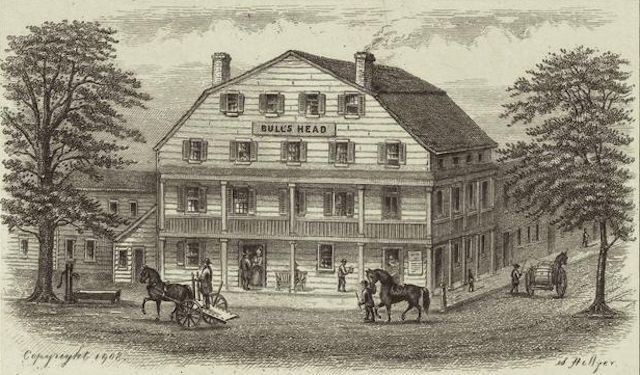
The hotel, depicted in 1830. Image via Wikimedia Commons
The Bull’s Head Hotel on 44th Street, near the provost marshal’s office, was one of many buildings, including the Mayor’s residence on 5th Avenue, that was attacked by the riotous crowd. The story goes that the proprietors of the hotel refused the angry mob alcohol. Having little on their minds except destruction, the crowd burned the entire hotel to the ground. Very few of the places destroyed that morning had anything to do with the drafts, except for the provost marshal’s office. Many buildings, like the Bull’s Head Hotel, not to be mistaken for the Bull’s Head Tavern where General George Washington established a temporary headquarters in 1783, were simply in the crowd’s way.

This 1827 oil painting by George Carlin depicts the chaos and debauchery that largely characterized the state of the Five Points. Image via Wikimedia Commons.
The Five Points, infamous for being the site of the bloody Dead Rabbits Riot only a few years back, was uncharacteristically silent during most of the Draft Riots. One particular story, however, involves the former Hart’s Alley, in which a number of protestors became trapped at the alley’s dead end. Residents surrounding the alley, both black and white, poured hot starch on the rioters, driving them from the neighborhood. They did not return to the Five Points for the duration of the riots.
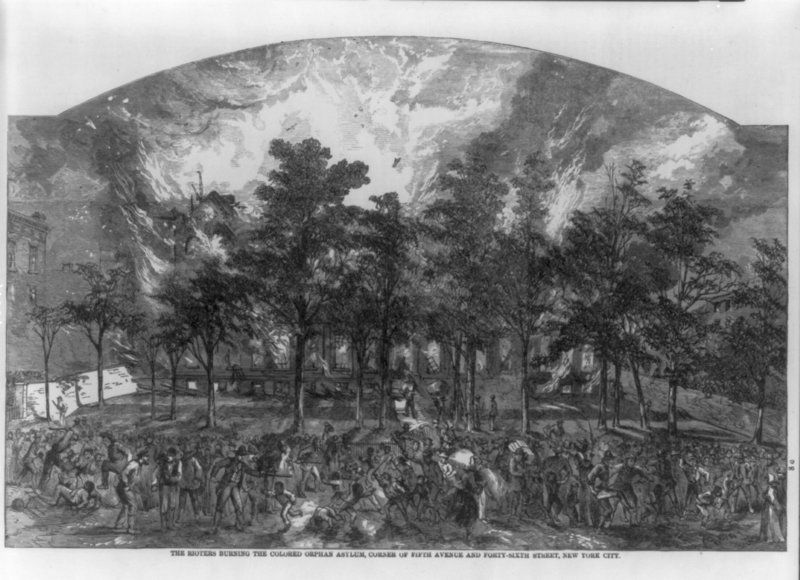
Image from Library of Congress
In one of the more disturbingly racist acts of the Draft Riots, white protestors targeted the Quaker-run Colored Orphans Asylum on 5th Avenue, citing their fears of impending job competition from emancipated slaves moving to the North. The orphanage, established in 1836, was the first institution to take black children whose parents had died. News of the riot reached them early, and the children were smuggled through a back door. The building was burned, but was rebuilt in the Bronx four years later. The block is now occupied by a branch of the Parsons School.
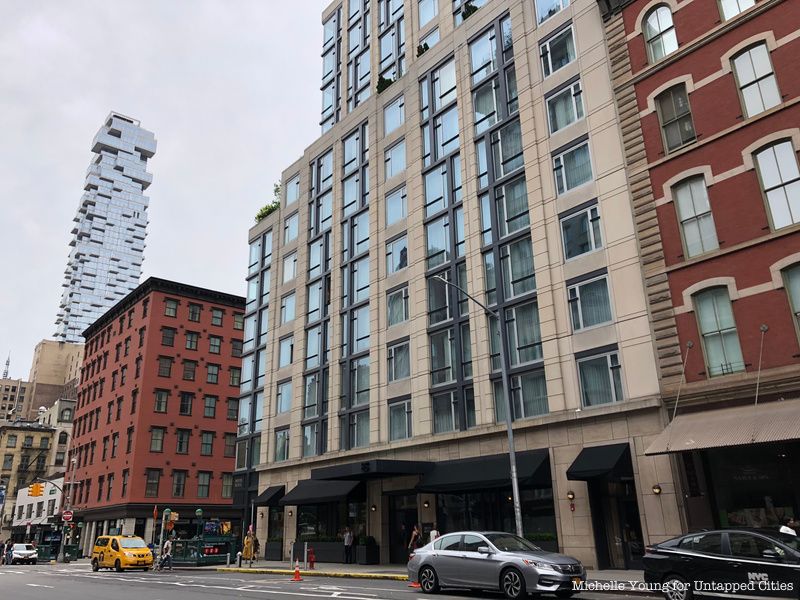
The area around 93 West Broadway today
Another victim of the crowd’s race-fueled anger was Dr. James McCune Smith, the first licensed African American doctor in history as well as the first African American owner of a pharmacy. He had both black and white customers upon opening his pharmacy and entertained popular abolitionists like Frederick Douglass and John Brown in the building’s back room. He was a founding member of the Radical Abolitionist Party. The pharmacy was destroyed, and at least 11 black men were killed on the first day of the riots. The site is now a bakery and apartment complex.

The skyscrapers of Newspaper Row. New York Times photo archive, Image in public domain from Wikimedia Commons.
On the first day of the riots, crowds expanded past the ruins of the provost marshal’s office building, looking for more targets to vent their frustrations. They decided to storm the office of The New York Times at 41 Park Row. In probably the most bizarre confrontation from all four days of rioting, the paper’s editor and owner, Henry Raymond, instructed his staff to head to the building’s handy gatling guns and warded the crowd off with them, manning one himself. The crowd, wisely, chose not to attack. Pace University purchased the building in 1951 and repurposed it for classrooms. The gatling guns were never recovered.
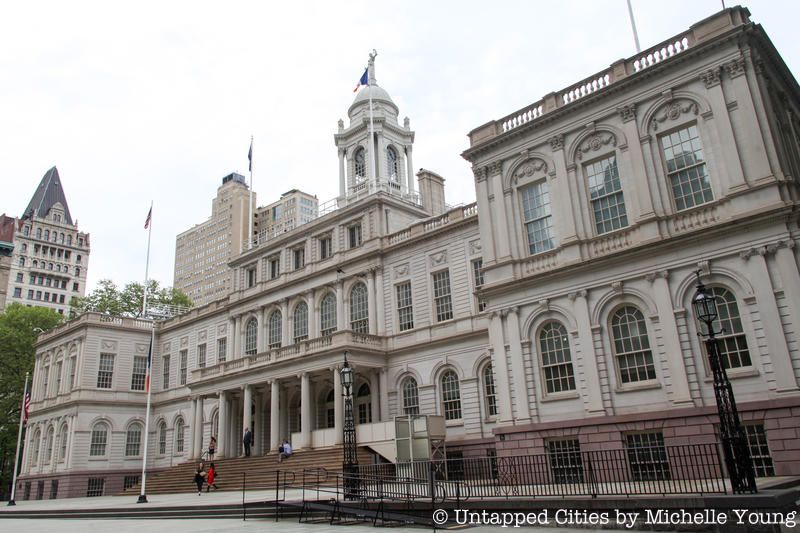
New York’s City Hall was the place from which the city government, facing enormous scrutiny from protestors and fearful bystanders alike, attempted to calm the rioting crowds. New York Governor Horatio Seymour spoke from its steps to a crowd of protestors, many of whom had murdered and pillaged over the past few days of the riot. Seymour announced himself a friend of the protestors and that the draft had been suspended in New York City. On the third day of the riots, a quorum of the City Council formally denounced the draft. It would be another day before military forces would successfully beat down the riot in a final confrontation near Gramercy, but the damage, including a fortune’s worth of damages to buildings and a death toll estimated at 120, had already been done.
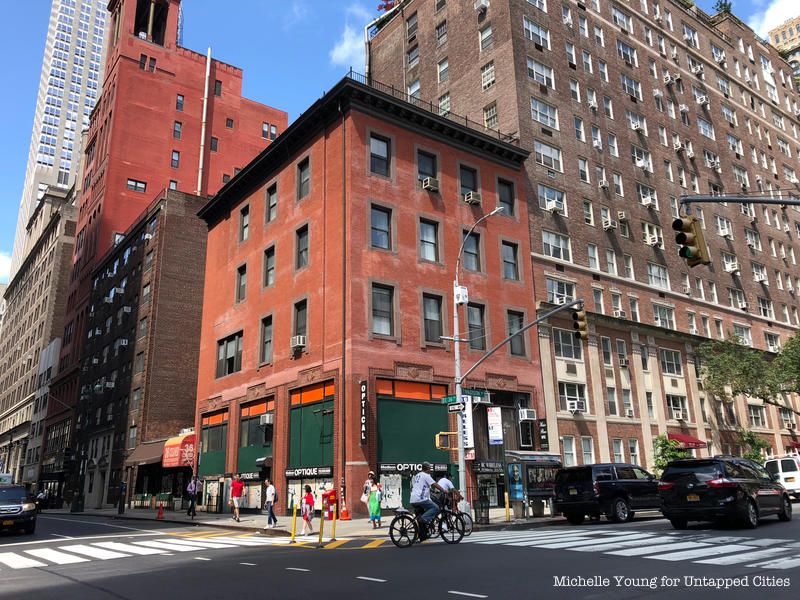
Time is short to check out the former mansion of Archbishop “Dagger John” Hughes, who addressed the draft rioters to cease and desist from this very building in 1863. As of September 2015, the building at 218 Madison Avenue, across from the Morgan Library and Museum, was purchased and will be demolished. In its place will rise a 10-story luxury apartment building Hughes also made the plans for St. Patrick’s Cathedral on Fifth Avenue, but did not live to see the completion.
Next, read about 5 alleys and streets in Chinatown steeped in early New York history. Get in touch with the author @jinwoochong.
Subscribe to our newsletter